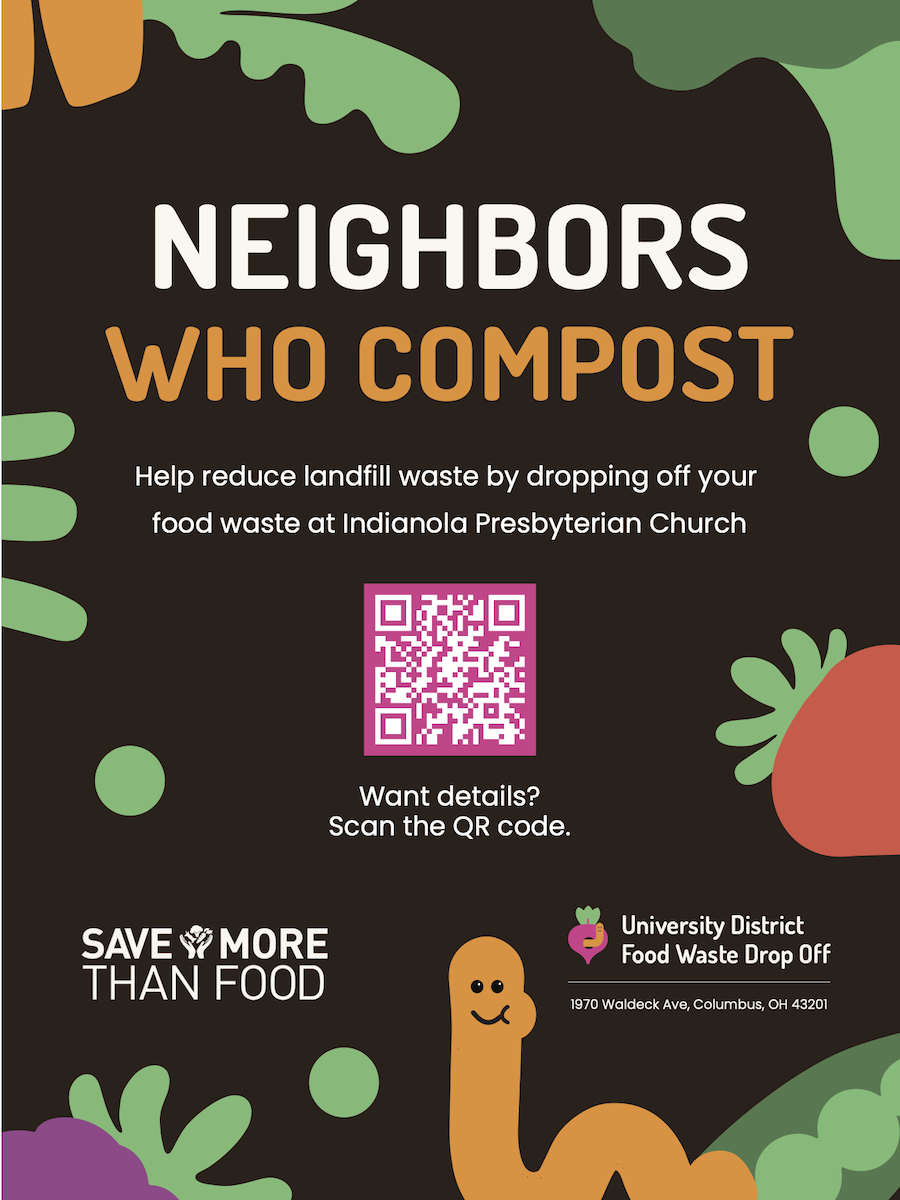Design Students Help Launch Food Scrap Collection Site in University District

This fall, a new Food Scrap Collection Site opened in the University District, offering students and residents a sustainable way to reduce food waste. While the initiative has gained attention for its environmental impact, the story behind its design reveals a deeper collaboration between Ohio State’s Department of Design and local community partners.
The site’s concept was born in the Spring 2025 Collaborative Design Studio (DESIGN 4650/5650), led by Professor Maria Palazzi. Nineteen third- and fourth-year undergraduate students explored food waste reduction through a design lens, developing proposals that balanced environmental responsibility, community needs, and public engagement.
Over the summer, three students—Aria Beard (Interior Design), Jada Davis (Visual Communication Design), and Emerson Lepicki (Visual Communication Design)—worked with the University District Organization (UDO) to refine and realize the site’s final design. Under the direction of UDO’s Camille Snyder, the students translated classroom concepts into a functional, community-centered installation.
“This project is a great example of how design education can intersect with real-world sustainability efforts,” said Professor Palazzi. “Our students weren’t just designing for a hypothetical scenario—they were designing for their own neighborhoods.”
The project was funded by a 2025–26 OSEP Academic Collaboration Award, supporting the initiative titled “Establishing A Central Food Scrap Collection Site in the University District to Help Reduce and Redirect OSU Student Food Waste from Columbus Landfills.” The award enabled students to work directly with community leaders and sustainability experts, including Ohio State’s Zero Waste Manager Molly Kathleen and SWACO’s Food Waste Programs Administrator Sara Gallaugher.
The collaboration was initiated by Camille Snyder, Nora Gerber, and Pastor Trip of the University District Organization and Indianola Presbyterian Church, who envisioned a neighborhood-based solution to food waste. Their partnership with the Collaborative Design course bridged academic inquiry with community action.
While recent media coverage has focused on the environmental benefits of the site, the Department of Design celebrates the student-led design process that shaped its identity and accessibility. The project exemplifies how design can serve as a tool for social responsibility, sustainability, and civic engagement.

